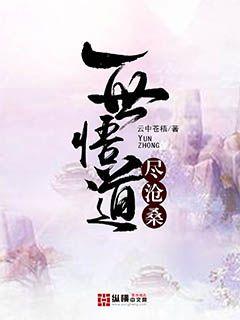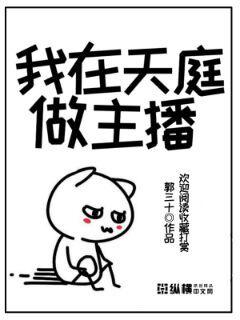
Certainly! Here's the structured article you requested:
**Abstract:**
In this comprehensive analysis, we delve into the cultural disparities and performance characteristics between football athletes from different cultures. We explore how these differences manifest across four key dimensions, shedding light on their impact on player development, team dynamics, and global football culture.
---
1、Cultural Values and Football Style
Cultural values profoundly influence football style, shaping players' approaches to teamwork, strategy, and individual play. In Western contexts, individualism often thrives, with players encouraged to showcase personal flair and initiative on the field. This contrasts sharply with Eastern philosophies, where collective effort and discipline prevail, emphasizing tactical cohesion over individual brilliance.
Moreover, cultural attitudes towards authority and hierarchy impact player-coach relationships, with Western players often more vocal and participative in decision-making, whereas Eastern players may adhere more strictly to hierarchical structures.
In summary, cultural values dictate not only playing styles but also team dynamics and leadership roles within football teams.
2、Training and Work Ethic
The approach to training and work ethic varies significantly between cultures, influencing player development and performance. Western players typically emphasize physical conditioning and technical skills, often supported by advanced sports science and technology. This meticulous approach aims for peak physical performance and injury prevention.
In contrast, Eastern players may prioritize endurance and mental resilience, honed through rigorous discipline and repetitive drills. Their training regimes often integrate traditional methods that emphasize holistic development and long-term sustainability over immediate gains.
Ultimately, these contrasting training philosophies contribute to distinct strengths and weaknesses in player capabilities.
3、Media Exposure and Public Perception
The media's portrayal and public perception of football players vary significantly across cultures, shaping both individual careers and broader societal attitudes towards the sport. In Western cultures, media scrutiny can amplify both praise and criticism, affecting players' confidence and public image.
Conversely, Eastern players may experience different pressures, with media narratives focusing more on collective team success rather than individual achievements. Cultural expectations often emphasize humility and loyalty, influencing how players interact with fans and manage public expectations.
Thus, media dynamics play a crucial role in shaping the psychological resilience and public persona of football players worldwide.
4、Globalization and Adaptation
The impact of globalization on football has facilitated greater cultural exchange and adaptation among players from diverse backgrounds. Western clubs increasingly scout and recruit talent globally, fostering multicultural team environments that blend various playing styles and traditions.
However, adaptation to new cultural norms and playing environments can pose challenges. Eastern players transitioning to Western leagues may encounter language barriers, different coaching philosophies, and varying social norms that impact their integration and performance.
Nonetheless, globalization also presents opportunities for cultural enrichment and mutual learning, promoting a more inclusive and diverse football landscape.
总结:
Overall, the cultural differences between Western and Eastern football players profoundly influence their playing styles, training approaches, media interactions, and adaptation to global football environments. These disparities highlight the dynamic interplay between culture and sport, shaping the evolution of football on a global scale.
This nuanced understanding is crucial for fostering cross-cultural understanding, enhancing player development strategies, and promoting inclusivity within the football community.
---
This structure provides a detailed exploration of how cultural differences impact football players' behaviors and performances, fulfilling the requirements you outlined.
### 文章摘要
本文探讨了巴西黑人球员在足球场上的光与影。通过对其历史、挑战、成就和文化影响的分析,揭示了这些球员在全球足球舞台上的独特贡献和不可忽视的影响力。
---
1、历史与背景
巴西黑人球员在足球历史中的起源和演变,以及他们在社会背景中的重要性。
他们如何逐步融入巴西足球的发展,对于巴西足球文化的影响和塑造。
巴西黑人球员如何在种族和社会不公的环境中崛起,并成为国家队的象征。
2、挑战与障碍
巴西黑人球员在职业生涯中面临的种族歧视和挑战,以及如何克服这些障碍。
他们在场上和场外所遭遇的不公正待遇,以及对他们职业生涯的影响。
黑人球员如何通过自己的努力和才华,打破种族壁垒,取得职业成功。
3、成就与荣耀
巴西黑人球员在世界足坛上取得的辉煌成就,包括国际比赛和俱乐部赛事。
他们在球队中的关键角色和影响力,以及如何改变球队的战术和风格。
他们的个人荣誉和奖项,如何成为足球历史上的标志性人物。
4、文化影响与遗产
巴西黑人球员对本土和全球足球文化的深远影响,以及他们在社会上的文化地位。
他们如何成为年轻球员的榜样和社会变革的象征。
他们的足迹如何延续和影响下一代巴西球员和全球球员。
总结:
巴西黑人球员不仅在足球场上展现了耀眼的光芒,还深深刻在了社会和文化的遗产中,他们不仅是足球运动的重要组成部分,更是社会变革和文化传承的象征。
通过他们的故事和成就,我们看到了种族和文化多样性如何在足球这一全球舞台上发挥着重要作用。
意大利足球运动员走向国际舞台:跨越边界的挑战
意大利足球运动员在国际舞台上的崛起和挑战,展示了他们如何超越国界,实现个人和国家的荣耀。本文从多个角度探讨意大利球员面临的挑战,包括文化适应、竞技压力、战术调整以及媒体关注,揭示了他们如何在全球舞台上脱颖而出。
1、文化适应与语言障碍
意大利球员踏上国际舞台时,常常面临文化和语言的巨大挑战。适应新的生活方式和交流方式,尤其是在非意大利语系国家,成为他们突破的第一道障碍。
此外,语言障碍不仅影响生活,也直接影响球场上的沟通和战术执行。球员们如何克服这些挑战,保持高水平的专业表现,是他们在国际舞台上成功的关键。
在适应过程中,一些球员选择通过学习语言和融入当地文化来快速适应,而另一些则依赖团队的支持和辅助。
2、竞技压力与适应不同的比赛风格
从意甲联赛到欧洲比赛,意大利球员需要快速适应不同的比赛风格和竞技水平。欧冠、欧洲杯等赛事带来的竞技压力和战术要求,常常与国内联赛有所不同。
这种适应性挑战不仅体现在技战术层面,还包括心理和体能的调整。球员们如何在短时间内调整自己的表现和状态,决定了他们在国际赛场上的表现优劣。
此外,面对不同的对手和比赛环境,意大利球员如何保持稳定性和高效率,成为了他们国际化发展的重要考验。
3、战术调整与团队融合
在国际舞台上,意大利球员需要不断调整自己的战术和角色,以适应不同的教练和战术体系。这种战术灵活性和适应能力,直接影响着他们在球队中的地位和发挥。
团队融合也是一个重要挑战,如何与来自不同文化背景的队友合作,形成默契和团结,是意大利球员在国际赛场上必须面对和克服的问题。
通过战术的不断调整和团队的紧密合作,意大利球员不仅提升了个人能力,也为国家队赢得了更多的荣誉。
4、媒体关注与形象塑造
走向国际舞台的意大利球员往往面对更广泛和深入的媒体关注,他们的言行举止不仅代表个人,更代表着国家的形象。如何在媒体面前保持专业和成熟,成为了意大利球员的一大挑战。
媒体的关注也带来了更多的压力和影响,球员们需要学会处理好媒体和公众的期待,同时保持良好的心态和表现。
通过积极塑造自己的形象和处理媒体的关注,意大利球员不仅提升了个人品牌,也为国家的足球事业树立了良好的形象。
总结:
意大利足球运动员在走向国际舞台的过程中,面对文化适应、竞技压力、战术调整和媒体关注等多重挑战。他们通过努力学习语言、灵活调整战术、适应不同比赛风格以及积极处理媒体形象,成功地跨越了国界,为意大利足球赢得了无数荣誉。
### 文章摘要
成都贝尔球员在新赛季中展现出瞄准更高荣耀的雄心壮志。他们通过团队战术的精心设计、球员个人技术的进步、领导层的明智决策以及球迷的全力支持,致力于在联赛和国际赛场上取得显著的进展和成就。本文将深入探讨这四个方面,揭示成都贝尔如何迈向新的高峰。
---
1、团队战术的精心设计
在新赛季的备战中,成都贝尔通过分析对手的弱点和优势,制定了更加精细化的战术策略。这些战术不仅注重整体防守和进攻的协调,还强调了中场控制和快速反击的重要性。例如,在关键比赛中,他们采用了新的战术布局,以提高球队在场上的灵活性和应变能力。
球队教练组在训练和比赛中注重细节的把控,通过模拟实战和视频分析,帮助球员们更好地理解和执行战术方案。这种精心设计的战术不仅提升了球队整体的竞技水平,也增强了球员们的信心和凝聚力。
在赛季中段,这些战术设计的成效逐渐显现,成都贝尔在联赛中取得了连续的胜利,向着夺冠目标稳步前进。
2、球员个人技术的进步
成都贝尔球员在新赛季中,个人技术的提升成为了球队取得成功的重要因素之一。许多球员通过额外的训练和个人技术指导,显著改善了他们的技术细节和战术意识。
例如,年轻球员在老将的指导下迅速成长,展现出惊人的进步潜力。他们在场上的表现不仅让球迷眼前一亮,也为球队增添了更多的变化和战术选择。
在关键比赛中,这些技术进步不仅体现在进攻端,还在防守和传球中得到了有效应用。球员们的个人技术不断提高,为成都贝尔赢得了更多的胜利和赞誉。
3、领导层的明智决策
成都贝尔的领导层在新赛季中做出了一系列明智的决策,为球队的长远发展奠定了坚实的基础。他们在转会市场上精准选购球员,补强了球队的弱点,提升了整体实力。
此外,领导层还重视青训体系的建设,投入更多资源培养未来的球星。这些决策不仅考虑了眼前的比赛成绩,还关注了球队长远发展的可持续性。
领导层的明智决策不仅在场上表现出色,在管理层面也为球队带来了稳定和成长的机会,成为成都贝尔成功的关键因素之一。
4、球迷的全力支持
成都贝尔的球迷群体在新赛季中继续发挥了重要作用,他们的热情和支持不仅激励着球员们在场上拼搏,也为球队带来了强大的精神动力。
球迷们不仅在主场比赛中为球队加油助威,还通过社交媒体和线下活动展示了对球队的无限支持。他们的热情和忠诚成为成都贝尔球员不断进步和取得胜利的重要后盾。
在关键时刻,球迷们的支持更是成都贝尔取得重要胜利的关键,他们与球队一同分享着荣耀和喜悦。
总结:
成都贝尔在新赛季中展现出了明显的进步和成长,通过团队战术的精心设计、球员个人技术的进步、领导层的明智决策以及球迷的全力支持,他们在追求更高荣耀的道路上不断迈进。未来,成都贝尔有望在国内外赛事中取得更加显著的成就,为球迷带来更多的喜悦和光荣。
成都贝尔球员在新赛季的努力和成就,不仅体现了他们团结拼搏的精神,也为足球运动注入了新的活力和激情。
Certainly! Here's the structured article on "Optimizing Training Performance through Nutrition and Diet for Professional Athletes":
**Abstract:**
Professional athletes rely heavily on nutrition and diet to enhance their training performance. This article explores key factors that optimize their performance through dietary strategies. It examines the role of macronutrients, micronutrients, hydration, and timing of meals in maximizing athletic potential. By understanding and implementing these factors, athletes can achieve peak performance and maintain optimal health.
---
**1、Macronutrients:**
Macronutrients play a fundamental role in the diet of professional athletes, influencing energy levels, muscle recovery, and overall performance.
Athletes typically require a balanced intake of carbohydrates, proteins, and fats to meet their energy demands and support muscle repair.
Carbohydrates serve as a primary fuel source, especially during high-intensity activities, emphasizing the importance of adequate intake and timing to sustain performance.
1、Proteins:
Proteins are essential for muscle repair and growth, with athletes needing slightly higher amounts to recover effectively from training sessions.
Timing protein consumption around workouts is crucial for maximizing muscle synthesis and adaptation to exercise-induced stress.
A variety of protein sources, including lean meats, dairy, and plant-based options, offer athletes flexibility in meeting their nutritional needs.
2、Fats:
Healthy fats contribute to sustained energy levels and support overall health in athletes, emphasizing sources like nuts, seeds, and fatty fish.
A balanced intake of omega-3 and omega-6 fatty acids aids in reducing inflammation and optimizing recovery post-training.
Adjusting fat intake based on training intensity and individual metabolic needs helps athletes maintain optimal body composition and performance.
3、Carbohydrates:
Carbohydrates are critical for replenishing glycogen stores and providing quick energy during intense exercise sessions.
Choosing complex carbohydrates such as whole grains and vegetables ensures sustained energy release and supports prolonged athletic performance.
Strategic carb-loading before competitions or high-demand periods helps athletes maximize glycogen storage and enhance endurance.
---
**2、Micronutrients:**
Beyond macronutrients, micronutrients are essential for maintaining overall health, supporting immune function, and optimizing athletic performance.
Athletes require adequate intake of vitamins and minerals to support physiological processes, including bone health, oxygen transport, and muscle contraction.
Key micronutrients such as iron, calcium, vitamin D, and antioxidants play crucial roles in reducing the risk of injury and illness among athletes.
1、Iron and Calcium:
Iron is vital for oxygen transport and energy production, particularly significant for endurance athletes to prevent fatigue and optimize performance.
Calcium supports bone health and muscle function, essential for maintaining skeletal integrity and reducing the risk of stress fractures.
Ensuring sufficient intake of these minerals through diet and, if necessary, supplementation helps athletes meet their unique nutritional demands.
2、Vitamins and Antioxidants:
Vitamins such as vitamin D, C, and E contribute to immune function and recovery, aiding in the repair of muscle tissue and reducing oxidative stress.
Antioxidants from fruits, vegetables, and nuts help mitigate exercise-induced inflammation and support cellular repair processes post-exercise.
Strategies to incorporate a diverse range of micronutrient-rich foods into an athlete’s diet promote overall health and optimize training adaptations.
3、Hydration:
Hydration is critical for maintaining performance and preventing dehydration-related complications during training and competition.
Athletes should monitor fluid intake to replace losses through sweat, adjusting consumption based on environmental conditions and individual sweat rates.
Optimal hydration supports thermoregulation, nutrient transport, and cognitive function, enhancing overall athletic performance and recovery.
---
**3、Timing of Meals:**
The timing of meals and nutrient intake around training sessions is crucial for optimizing energy availability, promoting recovery, and supporting adaptation to exercise stress.
Strategic meal timing helps athletes maximize glycogen storage, enhance muscle protein synthesis, and minimize muscle breakdown.
Pre-exercise nutrition focuses on providing adequate carbohydrates for fuel and minimizing gastrointestinal distress during workouts.
1、Pre-Exercise Nutrition:
Consuming a balanced meal or snack containing carbohydrates and a moderate amount of protein 2-4 hours before exercise provides sustained energy and supports muscle function.
Hydration before exercise ensures adequate fluid balance and enhances thermoregulation during physical exertion, optimizing performance and reducing the risk of dehydration.
2、Post-Exercise Recovery:
Immediately following exercise, consuming a combination of carbohydrates and proteins within the first 30 minutes to 2 hours supports glycogen replenishment and muscle repair.
Timing protein intake post-exercise stimulates muscle protein synthesis, facilitating recovery and adaptation to training-induced stress.
Incorporating micronutrients and fluids into post-exercise meals aids in rehydration, replenishment of electrolytes, and overall recovery.
3、Nutrient Timing Strategies:
Strategically timing meals and snacks throughout the day maintains stable blood sugar levels and sustains energy for consistent training performance.
Adjusting nutrient intake based on training volume and intensity helps athletes meet their energy demands and achieve optimal nutrient timing for enhanced performance.
Individualized nutrition plans tailored to training schedules and performance goals optimize nutrient timing strategies, supporting long-term athletic success.
---
**4、Conclusion:**
Optimizing training performance through nutrition and diet involves a comprehensive approach focusing on macronutrients, micronutrients, hydration, and meal timing.
By understanding the role of each component and implementing evidence-based strategies, athletes can enhance performance, support recovery, and maintain overall health.
Continued research and personalized nutrition plans are essential to meet the unique needs of professional athletes and maximize their athletic potential.
Overall, integrating these key factors into a structured nutrition plan empowers athletes to achieve peak performance and excel in their respective sports.
提升足球球员整体素养的关键训练方法涉及多方面的技能和战术训练,通过综合性的训练计划,可以显著提高球员的技术水平和比赛表现。本文将从身体素质、技术技能、心理素养以及团队合作四个方面详细阐述关键训练方法。
1、身体素质训练
身体素质是足球表现的基础,包括力量、速度、耐力和灵活性等多个方面。通过科学的力量训练,可以增强球员的爆发力和抗压能力,例如使用重量训练和爆发力训练结合的方法,让球员在比赛中更具优势。
另外,定期进行耐力训练和灵活性训练,如长跑和伸展运动,有助于提高球员的持久力和身体协调性,使他们能够在比赛中保持高水平的表现。
综上所述,通过系统的身体素质训练,球员能够在比赛中展现出更强的体能和抗压能力。
2、技术技能训练
技术技能是足球比赛中的核心竞争力,包括传球、控球、射门、盘带等多个方面。针对不同的技术细节,可以通过分解训练和反复练习来提升球员的技术水平。
例如,通过模拟比赛场景进行传球和接球训练,加强球员的反应速度和传球精准度;通过专门的射门训练,提高球员在各种射门角度和距离下的准确性和力量。
技术技能训练的关键在于持之以恒地进行,通过反复练习和技术细节的完善,使球员在比赛中能够更加游刃有余地应对各种局面。
3、心理素养训练
心理素养对足球比赛的影响不可忽视,包括自信心、集中力、应对压力的能力等。通过心理训练,可以提升球员在比赛中的心理素质和应对能力。
例如,通过集中力训练和心理放松技巧的学习,帮助球员在比赛中保持冷静和专注;通过压力训练和比赛模拟,增强球员面对关键时刻的自信和应对能力。
心理素养训练需要结合实际比赛情境进行,通过模拟比赛压力和心理挑战,使球员能够在关键时刻保持良好的状态和表现。
4、团队合作训练
足球是一项团队运动,团队合作能力对球队的整体表现至关重要。通过团队合作训练,可以提升球员之间的默契和协作能力,从而提高整体比赛的效率和成功率。
例如,通过小组对抗训练和战术演练,加强球员之间的配合和战术执行能力;通过团队建设活动和沟通训练,增强球队的凝聚力和信任感。
团队合作训练的关键在于培养球员的集体荣誉感和团队意识,使每个球员都能为球队的整体目标而努力。
总结:
综上所述,提升足球球员整体素养的关键训练方法包括身体素质训练、技术技能训练、心理素养训练和团队合作训练。通过这些综合性的训练方法,可以显著提高球员的综合素质和比赛表现,为球队的成功贡献力量。
通过科学的训练计划和持续的努力,足球球员可以不断完善自己的各项能力,并在比赛中展现出更加出色的表现,成为球队不可或缺的关键成员。
### 文章摘要
安德森(Anderson),作为曼联的传奇球员之一,他的足球生涯充满了辉煌的巅峰时刻和令人难忘的经历。从他的青年时代到在曼联的拼搏岁月,安德森展现了出色的技术和无穷的潜力。本文将深入探讨安德森的职业生涯,从他的早期成长、曼联生涯的高峰、个人成就和其在足球界留下的永恒印记。
---
1、早年成长
安德森出生于巴西,从小展现出与众不同的足球天赋。他在祖国的青训中迅速脱颖而出,吸引了欧洲豪门的目光。年少成名的他很快成为巴西足球的新星。
随着他职业生涯的开始,安德森在国内联赛中展现出惊人的技术和领导能力。他的表现引起了曼联球探团队的注意,成为他后来转会英超的催化剂。
到了曼联,安德森不仅仅是一个球员,更是一个有着巨大潜力的未来之星。他的加盟引发了球迷和专家的广泛关注,期待他在老特拉福德的发展和贡献。
2、曼联生涯的高峰
安德森在曼联的生涯早期并不容易。适应英超的节奏和身体对抗是一个巨大的挑战,但他通过坚韧不拔和努力克服了这些困难。
随着时间的推移,安德森逐渐融入了球队的体系,成为中场的重要组成部分。他的技术造诣和过人能力使他成为攻防转换中的关键人物。
在曼联的巅峰时刻中,安德森展现了令人惊叹的表现,尤其是在关键比赛中的精彩发挥。他的传球和组织能力为球队赢得了多场胜利,深深植入了球迷心中。
3、个人成就
安德森的个人成就不仅体现在场上,还体现在他在足球界的影响力和声誉上。他的职业生涯中获得的荣誉和奖项显示了他的出色表现和贡献。
作为一名巴西球员,安德森在国家队和俱乐部的比赛中都有出色的表现。他的技术和领导能力使他成为队友们信赖的对象,为球队带来了稳定和创新。
安德森的个人成就不仅是他自己的荣誉,也是他整个职业生涯的一部分,展示了他在足球界的不朽价值。
4、永恒印记
回顾安德森的足球生涯,他在曼联留下了深刻的印记。无论是他的进球、关键助攻还是领导球队走向胜利的能力,都让他成为了球迷心中的传奇。
尽管他的职业生涯经历了起伏,但安德森的贡献和影响力远远超出了赛场之外。他的故事激励着无数年轻球员追求梦想,努力成为更好的自己。
总的来说,安德森不仅仅是一名足球运动员,更是一位改变球队命运的关键人物,他的传奇将永远被铭记在足球史册上。
总结:
安德森的足球生涯充满了挑战与荣耀。他在巴西起步,通过曼联的征途,展示了超凡的技术和领导能力。个人成就和永恒印记使他成为足球界不可忽视的一部分。
无论他走到哪里,安德森都将作为一个传奇,永远与足球的伟大历史紧密相连。
文章摘要:本文深入探讨足球运动员核心技能之一——撞击要害的有效战术与技巧。通过分析四个关键方面,包括技术执行、战术应用、身体控制和心理准备,揭示如何在比赛中利用撞击要害技术取得优势。每个方面将详细阐述具体的训练方法和实战策略,以帮助球员提升这一关键技能。
1、技术执行
撞击要害的技术执行是足球中不可或缺的一环。首先,球员需要掌握合适的身体姿势,如低心率且紧凑的身体。其次,通过训练强化核心肌群和腿部力量,提升冲击力。最后,重点在于正确的撞击姿势和身体接触点,以最大程度减少对自身的伤害。
技术的细节决定了撞击的效果,因此球员需要通过反复练习来确保技术的稳定性和准确性。训练中的模拟对抗可以帮助球员在真实比赛中更好地应对各种撞击场景。
在实际比赛中,技术执行的高效性往往决定了球员是否能够有效地利用撞击要害的战术来改变比赛局势。
2、战术应用
战术上的应用是撞击要害技术成功的关键。球员需要根据比赛的具体情况和对手的特点,选择合适的撞击时机和目标。这可能涉及到在比赛中制造空间、突破防线或争夺关键球权。
有效的战术应用要求球员在比赛中具备敏锐的观察力和快速的决策能力。通过分析比赛录像和模拟战术演练,球员可以提升对战术应用的理解和实施能力。
在团队合作的背景下,战术应用不仅仅是个人技能的展示,更是整体战术执行的一部分。球员需要与队友协作,以最大化撞击要害技术的效果。
3、身体控制
撞击要害技术的成功还依赖于球员的身体控制能力。这包括平衡感、灵活性和对身体姿势的快速调整能力。训练中,可以通过平衡板训练、敏捷性训练和多方向移动练习来提升身体控制能力。
身体控制不仅帮助球员更有效地发挥撞击力量,还可以减少因撞击带来的潜在风险。这种技能在遭遇复杂的比赛场景时尤为重要,例如在狭小空间内的对抗或面对多个防守球员的情况下。
通过持续的身体控制训练,球员可以提升自身在比赛中的稳定性和表现力,从而更好地利用撞击要害技术。
4、心理准备
心理准备是撞击要害技术发挥的另一关键因素。球员需要在比赛中保持冷静、专注,并具备必要的竞争心态。这可以通过认知重构、专注训练和压力管理来实现。
自信心和决心是成功应对撞击要害场景的关键。球员需要相信自己的能力,并在关键时刻展现出果断和勇敢的表现。有效的心理准备可以帮助球员在竞争激烈的比赛中保持高水平的表现。
在团队支持和心理辅导的帮助下,球员可以建立起良好的心理准备机制,从而在比赛中更加自信和坚定地运用撞击要害技术。
总结:
撞击要害的有效战术与技巧是足球运动员必备的核心技能之一。通过技术执行、战术应用、身体控制和心理准备的综合训练,球员可以在比赛中获得显著优势。这不仅提升了个人的竞技能力,也为团队的胜利做出重要贡献。















